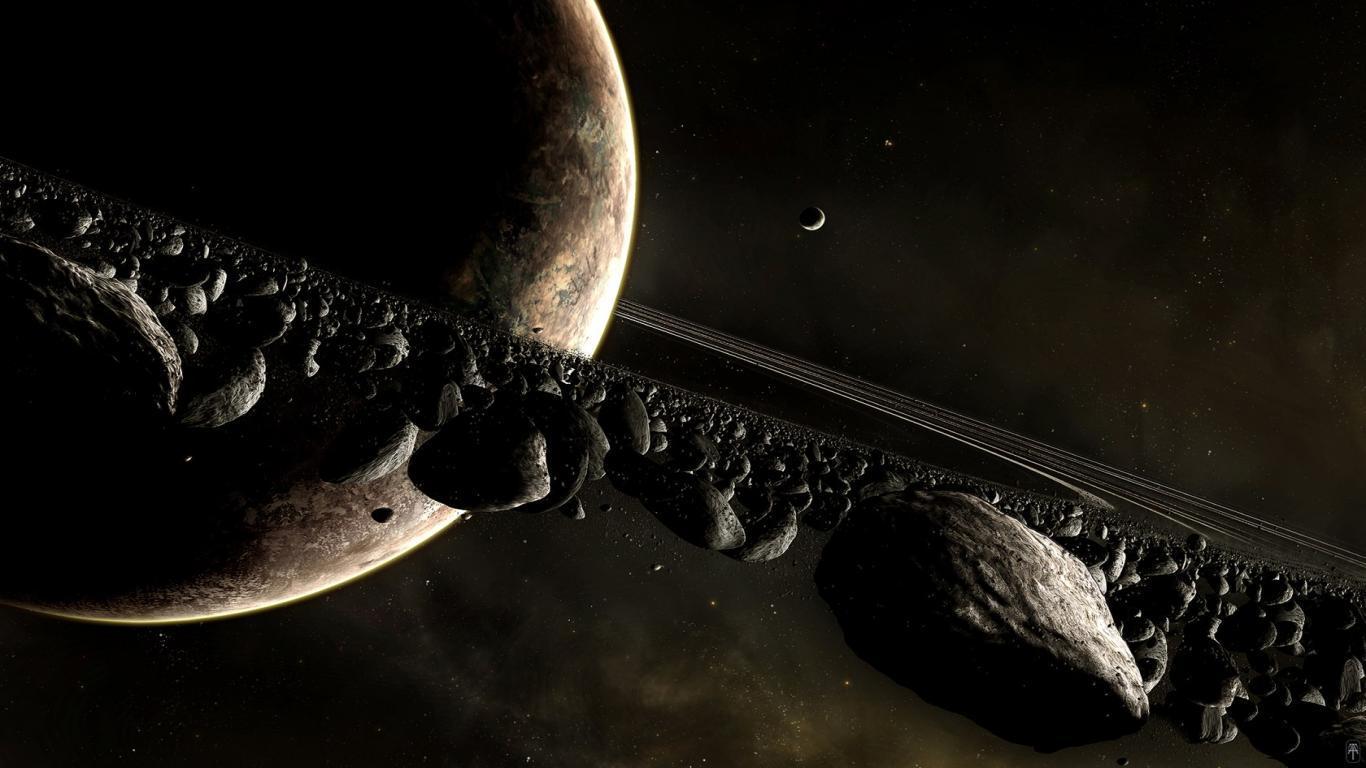



A planet is an astronomical object orbiting a star or stellar remnant that:
The term planet is ancient, with ties to history, astrology, science, mythology, and religion. Several planets in the Solar System can be seen with the naked eye. These were regarded by many early cultures as divine, or as emissaries of deities. As scientific knowledge advanced, human perception of the planets changed, incorporating a number of disparate objects. In 2006, the International Astronomical Union (IAU) officially adopted a resolution defining planets within the Solar System. This definition is controversial because it excludes many objects of planetary mass based on where or what they orbit. Although eight of the planetary bodies discovered before 1950 remain "planets" under the modern definition, some celestial bodies, such as Ceres, Pallas, Juno and Vesta (each an object in the solar asteroid belt), and Pluto (the first trans-Neptunian object discovered), that were once considered planets by the scientific community, are no longer viewed as such.
The planets were thought by Ptolemy to orbit Earth in deferent and epicycle motions. Although the idea that the planets orbited the Sun had been suggested many times, it was not until the 17th century that this view was supported by evidence from the first telescopic astronomical observations, performed by Galileo Galilei. At about the same time, by careful analysis of pre-telescopic observation data collected by Tycho Brahe, Johannes Kepler found the planets' orbits were not circular but elliptical. As observational tools improved, astronomers saw that, like Earth, the planets rotated around tilted axes, and some shared such features as ice caps and seasons. Since the dawn of the Space Age, close observation by space probes has found that Earth and the other planets share characteristics such as volcanism, hurricanes, tectonics, and even hydrology.
Planets are generally divided into two main types: large low-density giant planets, and smaller rocky terrestrials. Under IAU definitions, there are eight planets in the Solar System. In order of increasing distance from the Sun, they are the four terrestrials, Mercury, Venus, Earth, and Mars, then the four giant planets, Jupiter, Saturn, Uranus, and Neptune. Six of the planets are orbited by one or more natural satellites.
More than two thousand planets around other stars ("extrasolar planets" or "exoplanets") have been discovered in the Milky Way. As of 19 November 2016, 3,541 known extrasolar planets in 2,656 planetary systems (including 597 multiple planetary systems), ranging in size from just above the size of the Moon to gas giants about twice as large as Jupiter have been discovered, out of which more than 100 planets are the same size as Earth, nine of which are at the same relative distance from their star as Earth from the Sun, i.e. in the habitable zone. On December 20, 2011, the Kepler Space Telescope team reported the discovery of the first Earth-sized extrasolar planets, Kepler-20e and Kepler-20f, orbiting a Sun-like star, Kepler-20. A 2012 study, analyzing gravitational microlensing data, estimates an average of at least 1.6 bound planets for every star in the Milky Way. Around one in five Sun-like stars is thought to have an Earth-sized planet in its habitable zone.
The Solar System is the gravitationally bound system comprising the Sun and the objects that orbit it, either directly or indirectly. Of those objects that orbit the Sun directly, the largest eight are the planets, with the remainder being significantly smaller objects, such as dwarf planets and small Solar System bodies. Of the objects that orbit the Sun indirectly, the moons, two are larger than the smallest planet, Mercury.
The Solar System formed 4.6 billion years ago from the gravitational collapse of a giant interstellar molecular cloud. The vast majority of the system's mass is in the Sun, with most of the remaining mass contained in Jupiter. The four smaller inner planets, Mercury, Venus, Earth and Mars, are terrestrial planets, being primarily composed of rock and metal. The four outer planets are giant planets, being substantially more massive than the terrestrials. The two largest, Jupiter and Saturn, are gas giants, being composed mainly of hydrogen and helium; the two outermost planets, Uranus and Neptune, are ice giants, being composed mostly of substances with relatively high melting points compared with hydrogen and helium, called volatiles, such as water, ammonia and methane. All planets have almost circular orbits that lie within a nearly flat disc called the ecliptic.

The word "planet" derives from the Ancient Greek ἀστήρ πλανήτης astēr planētēs, or πλάνης ἀστήρ plánēs astēr, which means "wandering star," and originally referred to those objects in the night sky that moved relative to one another, as opposed to the "fixed stars", which maintained a constant relative position in the sky.
The idea of planets has evolved over its history, from the divine lights of antiquity to the earthly objects of the scientific age. The concept has expanded to include worlds not only in the Solar System, but in hundreds of other extrasolar systems. The ambiguities inherent in defining planets have led to much scientific controversy.